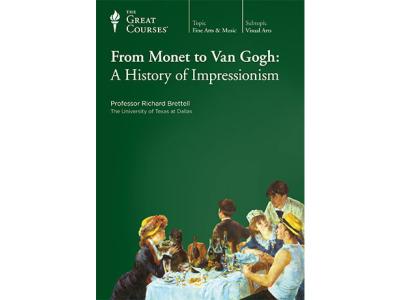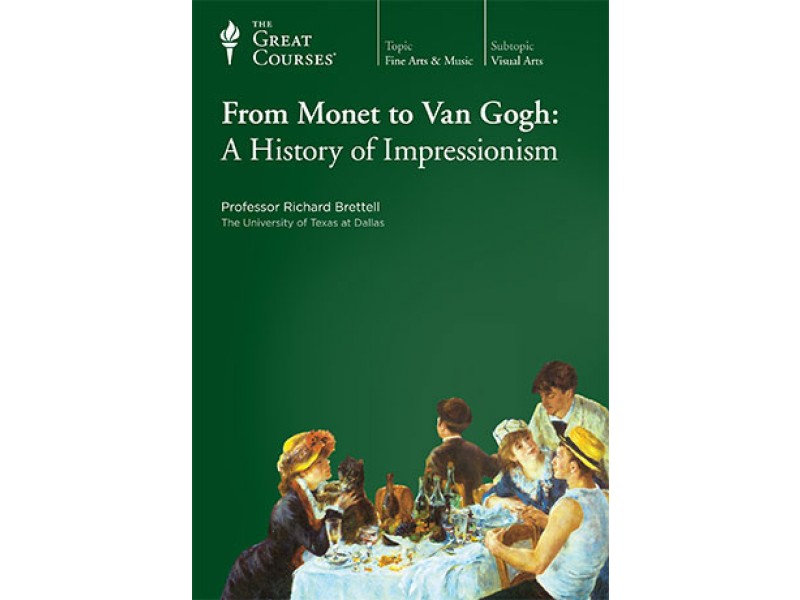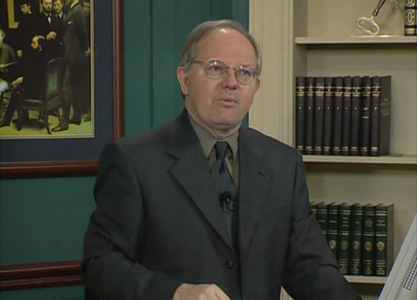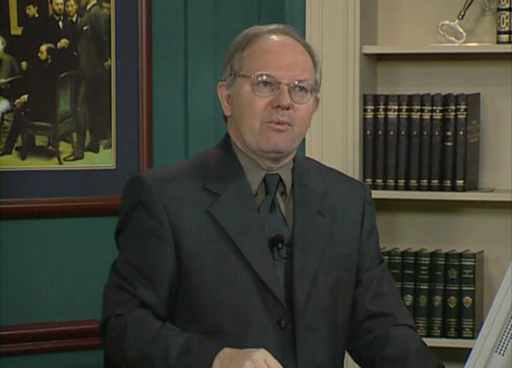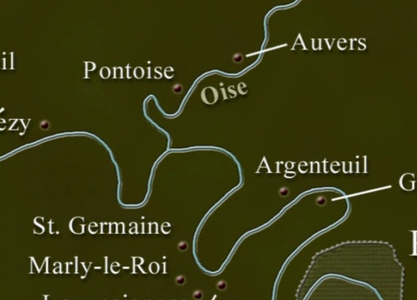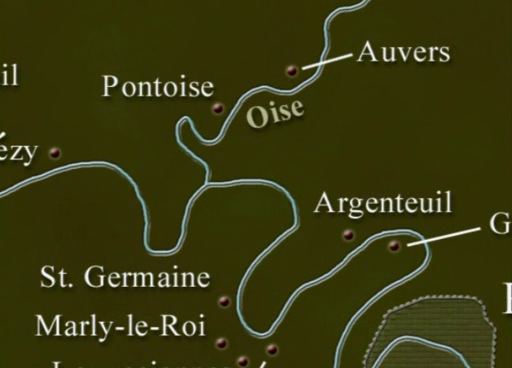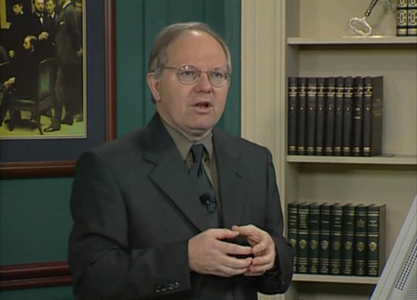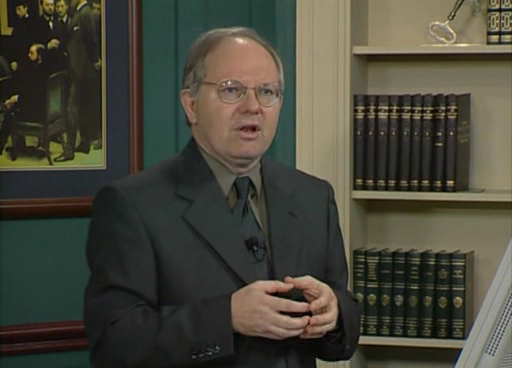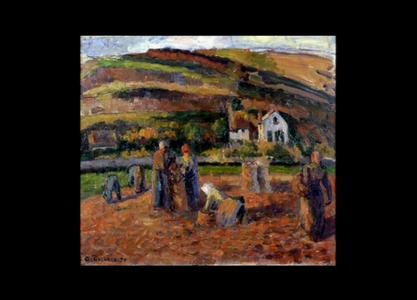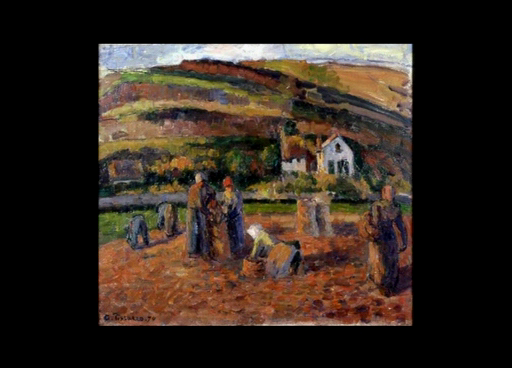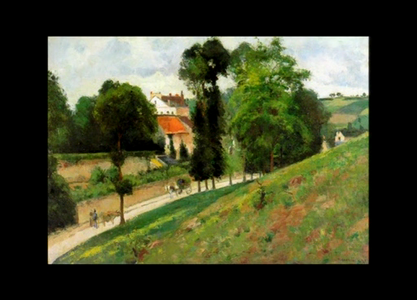From Monet to Van Gogh: A History of Impressionism
WEBRip | English | AVI | 512 x 368 | XviD ~1015 Kbps | 29.970 fps
MP3 | 128 Kbps | 48.0 KHz | 2 channels | 12:09:13 | 5.78 GB
MP3 | 128 Kbps | 48.0 KHz | 2 channels | 12:09:13 | 5.78 GB
Genre: eLearning Video / Art, History
They appeared in a period of upheaval. They saw the rebuilding of Paris, the rise of industrialism, the ruin of the Franco-Prussian war. They displayed their startling and shocking works in a series of exhibitions from 1874 to 1886. And by the 1890s, this "loose coalition" of artists who rebelled against the formality of the French Academy had created the most famous artistic movement in history. "They" were the Impressionists, and Professor Brettell is your expert curator and guide to a movement that created a new, intensely personal vision of the world.Whether the subject was a city street, a holiday beach, a harvest field, or a demoiselle's boudoir, they virtually invented the sensibility—urbane, contemporary, ever-changing—that today we take for granted as the "modern."
Who were the Impressionists? What's the difference between a Manet and a Monet? How does a Pissarro landscape differ from one by Cézanne? Were they really as personally scandalous as the Establishment alleged?
And why is Impressionism, a 19th-century phenomenon, still so appealing in the 21st?
What You Will Learn
These artists documented life in the latter half of the 19th century and provided models of behavior, decorum, and urban beauty that persist to this day. This series of lectures will introduce you to the style, subject, and function of Impressionist painting by artists including Monet, Renoir, Cassatt, Cézanne, Toulouse-Lautrec, and van Gogh.
Separate analysis is given to the important Impressionist exhibitions and their contemporary critics like the writer Baudelaire. Among key topics covered are the public and private worlds of Parisian modernity, life in the countryside, the new leisure class, and the influential legacy of Impressionism.
Dr. Brettell, Professor of Aesthetic Studies at The University of Texas at Dallas, is a teacher and curator of international renown and is widely published on 19th- and 20th-century art. His lectures are designed as a way for you to view and discuss the Impressionist revolution with a deft mix of history, biography, and art:
You'll learn how the Impressionist aesthetic was driven by the rise of the railroad and suburban tourism.
You'll learn how Mary Cassatt painted the lives of wealthy expatriates, while Henri de Toulouse-Lautrec scoured the dives of Montmartre to draw Paris by night.
You'll learn about technique: Degas's use of lighting effects. Renoir's plump, sensuous brushstrokes. Pissarro's use of slabs and pieces of paint. Gauguin and Van Gogh's bold, bright colors.
You'll see how Berthe Morisot could convey women's sense of boredom, sadness, and frustration.
You'll see how Monet's approach changed in his later years from one in which the subject was in flux and motion to one of constancy and stability.
You'll learn what happened to this radical movement as its leaders grew older—and more successful—by century's end.
"We will take a chronological, and oftentimes biographical, approach to studying the artists rather than looking at each career separately," says Professor Brettell. "This is due in large part to the fact that there was a certain amount of collectivity among them, visible not only in the Impressionist exhibitions but in the artistic tours/retreats that pairs of painters took in order to study modern life and its environs.
"As the life and career of each painter unfolds, we are introduced to their families, friends, and colleagues, all of whom become subjects in and influences on their work. The careers of many of the artists are discussed from their early exposure to art, their teachers, travels, and later stylistic influences."
Great Impressionist Works You Will See
Presented with these absorbing lectures are more than 200 vividly reproduced artworks for your study and enjoyment, including:
Ballet Rehearsal on the Stage, by Edgar Degas. This sepia-toned painting, done in the style of a photograph, was part of the first Impressionist exhibition and raised questions about how visual images were created.
Impression: Sunrise (Marine), by Claude Monet. This painting of a sailboat at dawn may have given Impressionism its name, along with Monet's well-known Impression Sunrise. Light, freely painted, about color and immediacy, it is one of the most radical paintings in the history of modern art.
Déjeuner sur l'herbe (Luncheon on the Grass), by Edouard Manet. This depiction of Manet's favorite model, Victorine Meurent, as a nude on a picnic with two clothed men was considered scandalous. It exemplifies Manet's tendency to shock, provoke, and raise more questions than he answers.
The Beach at Trouville, by Claude Monet. Painted on Monet's honeymoon, this canvas depicts his wife and Madame Boudin at Trouville, on the Normandy coast. The dots on Madame Boudin's dress are actually grains of sand that blew onto the canvas as Monet painted.
The Garden, by Berthe Morisot. Morisot executed this work, her career masterpiece, with an incredible gestural abandon that few male artists could match.
Vision after the Sermon, by Paul Gauguin. One of the most bizarre and powerful paintings in the history of art, this painting combines elements of high art, Japanese art, and religious imagery.
Trace the Beginning of "Modern Art"
The Impressionists were the first formal group of professional artists to include women: Berthe Morisot and the American, Mary Cassatt. Morisot, in fact, participated in seven of the eight Impressionist exhibitions, more than any other member of the movement except Pissarro.
In their first exhibition in 1874, the "Société Anonyme des Artistes" (the name Impressionists came later) took an approach that was not only modern, but unprecedented.
We tend to think of the history of art as one of individual geniuses who acted as teachers for subsequent groups of artists. But the Impressionists worked very differently. They chose to develop their craft as equals, painting and learning from one another in small groups.
Rather than promoting sameness, this way of working highlighted the unmistakable differences among the groups and artists.
Impressionist painters often painted the same scenes, at times simultaneously, with their easels side by side. These occasions present a fascinating opportunity to compare technique and to see the Impressionist approach at work. Renoir's and Monet's 1869 studies of La Grenouillère (The Frog Pond), a well-known spot for swimming, socializing, and renting boats, offer a notable case in point.
One of the legacies of Impressionism is to leave the viewer with a profound sense of life—of life captured on the canvas, through motion, light, and color, and life lived by these remarkable artists, always seeking to experience and to learn, to better capture the reality before their eyes.
This course is an absorbing lesson in the marvelous cultural, historical, and visual experiences that great paintings provide.
Lectures:
1. The Realist and the Idealist
2. Napoleon III’s Paris
3. Baudelaire and the Definition of Modernism
4. The Shock of the New
5. The Painters of Modern Life
6. Pierre-Auguste Renoir
7. Impressions in the Countryside
8. Paris under Siege
9. The First Exhibition
10. Monet and Renoir in Argenteuil
11. Cézanne and Pissarro in Pontoise
12. Berthe Morisot
13. The Third Exhibition
14. Edgar Degas
15. Gustave Caillebotte
16. Mary Cassatt
17. Manet’s Later Works
18. Departures
19. Paul Gauguin
20. The Final Exhibition
21. The Studio of the South—Van Gogh and Gauguin
22. Henri de Toulouse-Lautrec
23. The Nabis
24. La Fin
also You can find my other last: Art-posts
General
Complete name : 11.avi
Format : AVI
Format/Info : Audio Video Interleave
File size : 250 MiB
Duration : 30 min 16 s
Overall bit rate : 1 154 kb/s
Writing library : The best and REALLY easy backup tool
Video
ID : 0
Format : MPEG-4 Visual
Format profile : Advanced Simple@L5
Format settings : BVOP2
Format settings, BVOP : 2
Format settings, QPel : No
Format settings, GMC : No warppoints
Format settings, Matrix : Default (MPEG)
Codec ID : XVID
Codec ID/Hint : XviD
Duration : 30 min 16 s
Bit rate : 1 015 kb/s
Width : 512 pixels
Height : 368 pixels
Display aspect ratio : 1.391
Frame rate : 29.970 (30000/1001) FPS
Color space : YUV
Chroma subsampling : 4:2:0
Bit depth : 8 bits
Scan type : Progressive
Compression mode : Lossy
Bits/(Pixel*Frame) : 0.180
Stream size : 220 MiB (88%)
Writing library : XviD 1.1.0 Beta2 (UTC 2005-04-04)
Audio
ID : 1
Format : MPEG Audio
Format version : Version 1
Format profile : Layer 3
Format settings : Joint stereo / MS Stereo
Codec ID : 55
Codec ID/Hint : MP3
Duration : 30 min 16 s
Bit rate mode : Constant
Bit rate : 128 kb/s
Channel(s) : 2 channels
Sampling rate : 48.0 kHz
Frame rate : 41.667 FPS (1152 SPF)
Compression mode : Lossy
Stream size : 27.7 MiB (11%)
Alignment : Aligned on interleaves
Interleave, duration : 33 ms (1.00 video frame)
Interleave, preload duration : 504 ms
Writing library : LAME3.96r
Encoding settings : -m j -V 4 -q 2 -lowpass 17.5 -b 128
Complete name : 11.avi
Format : AVI
Format/Info : Audio Video Interleave
File size : 250 MiB
Duration : 30 min 16 s
Overall bit rate : 1 154 kb/s
Writing library : The best and REALLY easy backup tool
Video
ID : 0
Format : MPEG-4 Visual
Format profile : Advanced Simple@L5
Format settings : BVOP2
Format settings, BVOP : 2
Format settings, QPel : No
Format settings, GMC : No warppoints
Format settings, Matrix : Default (MPEG)
Codec ID : XVID
Codec ID/Hint : XviD
Duration : 30 min 16 s
Bit rate : 1 015 kb/s
Width : 512 pixels
Height : 368 pixels
Display aspect ratio : 1.391
Frame rate : 29.970 (30000/1001) FPS
Color space : YUV
Chroma subsampling : 4:2:0
Bit depth : 8 bits
Scan type : Progressive
Compression mode : Lossy
Bits/(Pixel*Frame) : 0.180
Stream size : 220 MiB (88%)
Writing library : XviD 1.1.0 Beta2 (UTC 2005-04-04)
Audio
ID : 1
Format : MPEG Audio
Format version : Version 1
Format profile : Layer 3
Format settings : Joint stereo / MS Stereo
Codec ID : 55
Codec ID/Hint : MP3
Duration : 30 min 16 s
Bit rate mode : Constant
Bit rate : 128 kb/s
Channel(s) : 2 channels
Sampling rate : 48.0 kHz
Frame rate : 41.667 FPS (1152 SPF)
Compression mode : Lossy
Stream size : 27.7 MiB (11%)
Alignment : Aligned on interleaves
Interleave, duration : 33 ms (1.00 video frame)
Interleave, preload duration : 504 ms
Writing library : LAME3.96r
Encoding settings : -m j -V 4 -q 2 -lowpass 17.5 -b 128
Screenshots
Exclusive eLearning Videos ParRus-blog ← add to bookmarks


